Week Ahead for October 28, 2024: Albemarle and Charlottesville Planning Commissions to meet for first time in six years
Plus: Albemarle's growth area panels will meet Wednesday for an update on the county's Comprehensive Plan process
Perhaps we all deserve this slower week in local and regional government as the national vote looms. But yet, there is always something happening in the six localities of the Thomas Jefferson Planning District and this is another write-up of what people can expect at meetings.
This week features three days that are the fifth version of themselves for this October. That often means irregular meetings and this week delivers.
Some highlights:
Albemarle and Charlottesville’s planning commissions will meet for the first time in six years on Tuesday for a philosophical conversation about how land use planning can help the community adapt to climate change and reduce greenhouse gas emissions.
Albemarle’s growth area management advisory bodies will meet Wednesday for an update on the county’s Comprehensive Plan update.
On Monday, the Charlottesville Redevelopment and Housing Authority will set the fair market rents for what Housing Choice Voucher payments are calculated. They’ll also approve a construction contract for the first phase of building their new headquarters on the Charlottesville Downtown Mall
There are no meetings in Fluvanna County or Greene County.
Thanks as always to the Piedmont Environmental Council for their sponsorship of this newsletter.
Monday, October 28, 2024
Charlottesville Redevelopment Housing Authority to set fair market rents, approve construction contract
The seven members of the Charlottesville Redevelopment and Housing Authority’s Board of Commissioners will meet at 6 p.m. in City Council Chambers. (agenda) (meeting info)
The CRHA administers many different kinds of units including those that are subsidized through the U.S. Department of Housing and Urban Development’s Housing Choice Voucher program. That program celebrated its 50th birthday. According to CRHA’s most recent annual plan, they administer 681 such vouchers.
“A housing subsidy is paid to the landlord directly by the PHA on behalf of the participating family,” reads a primer on HUD’s website. “The family then pays the difference between the actual rent charged by the landlord and the amount subsidized by the program.”
One action item on this meeting’s agenda is to set the fair market rents for 2025. For the purposes of calculating the subsidy, there are the rates:
Fair market rent for a studio would be set at $1,544 a month
A one bedroom unit is set at $1,635
A two bedroom unit is set at $1,901
A three bedroom unit is set at $2,370
A four bedroom unit is set at $2,883
A five bedroom unit is set at $3,315
The next action item sets the utility allowances for the next year. (read the resolution)
Earlier this year, the CRHA paid $2.65 million for a property on the Downtown Mall to serve as a new headquarters. Now there is a construction contract to pay the firm Alexander Nichols $508,382.59 for phase 1 which will include demolition and abatement. What is being abated? (read the resolution)
There’s also a property management report that includes the housing units co-owned by the City of Charlottesville. Tenants own a collective back rent of $221,027 according to the report. (read the report)
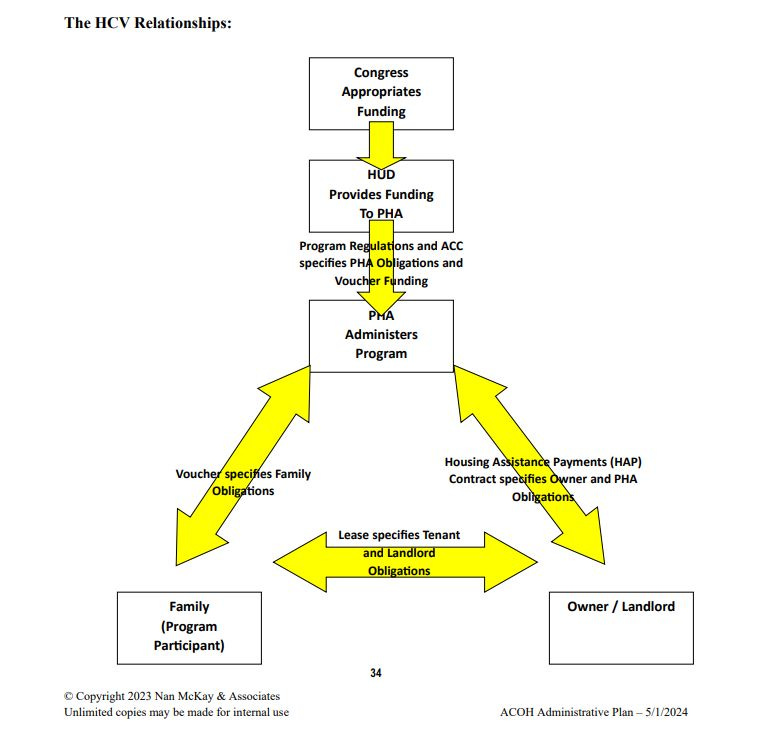
Louisa County Planning Commission to review tweaks to land use regulations
Different localities use different phrases to describe the rules used to govern construction of new projects. In Louisa, development is informed by Chapter 86 Land Development Regulations.
In all localities, the job of the Planning Commission is to review these rules periodically based on amendments proposed by staff. The Louisa Planning Commission will meet at 5 p.m. in the Public Meeting Room in the county administration building for a work session on the latest changes. (meeting info)
“The proposed amendments to definitions are to resolve discrepancies; conflicting regulations; and to provide clarification,” reads a description included in the second phase of draft amendments for the PC’s review. “The amendments are proposed to increase the kilowatts permitted under small-scale solar; and to define walkway.”
The limit for small-scale solar is being proposed to be increased from 30 kiloWatt houses to 60 kW. The rules state that rooftop arrays do not need zoning approval whereas ground-mounted ones do as accessory structures.
Other proposed rules include taking away the ability to have residential units in commercial zoning districts.
In other meetings:
The Albemarle County Historic Preservation Committee meeting scheduled for today has been canceled. So has the Pantops Community Advisory Committee, but they’ll meet on Wednesday.
The Charlottesville Youth Council will meet at 5:30 p.m. in CitySpace
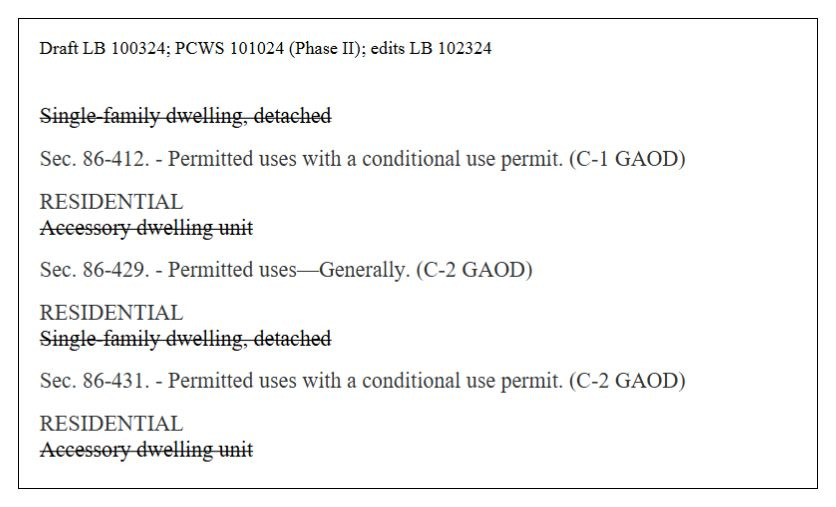
Tuesday, October 29, 2024
Albemarle and Charlottesville planning bodies to meet together for first time in six years
I present to you a geographic question that I do not know the answer to and one I’ve been wanting to know for a while. If one locality completely surrounds another, how can calculate the exact length of the perimeter?
As longtime readers know, localities in Virginia are completely separate from each other. There are regional bodies that have no direct authority over the decisions made by a City Council or a Board of Supervisors.
I’d like to know the exact length of the city-county perimeter to aid me in my hope to write out a definitive list of areas where shared land use planning might be beneficial. The effectiveness of a plan is only as good as implementation.
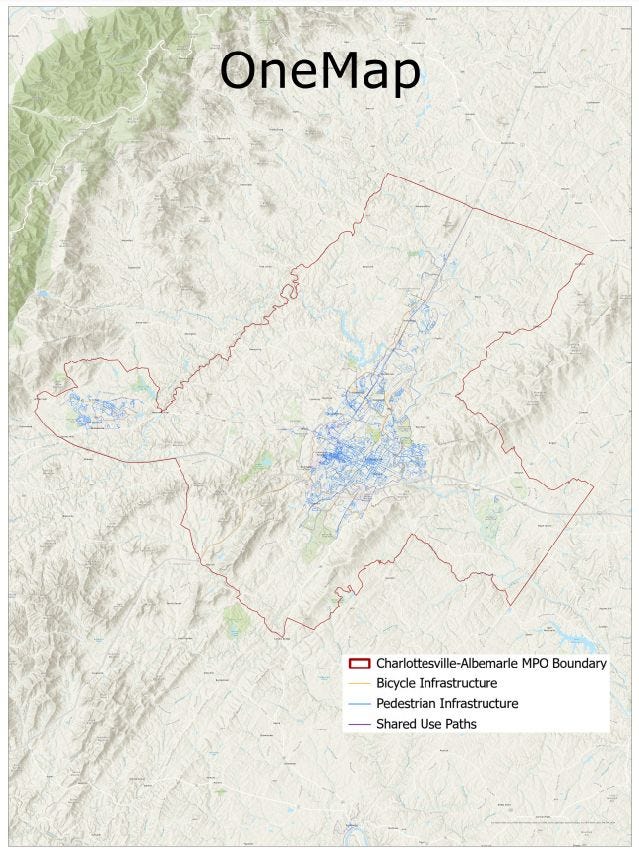
I’ve not put that list together yet in part because there hasn’t been a joint meeting of the Albemarle and Charlottesville Planning Commissions since 2018.
That changes this week when the two bodies will gather at 5:30 p.m. in Room 241 of the county’s office building at 401 McIntire Road. This meeting can be watched online. (meeting info)
The two groups will get a presentation from Resilient Together, the name given to joint climate action planning coordinated by staff from Albemarle, Charlottesville, and the University of Virginia.
“Natural hazards do not stop and start at the jurisdictional boundaries between Charlottesville and Albemarle County,” reads the website. “Studies have shown that we have similar vulnerabilities and challenges. Collaborating will help us to produce better, stronger results.”
Some background materials:
Preparing for Resilience – An Overview of Albemarle County Climate Change Impact
City of Charlottesville Climate Risk and Vulnerability Assessment
The two Planning Commissions will be asked to weigh in broadly on land use strategies such as compact development and conservation of natural resources to provide ecosystem services. More intense residential development theoretically provides more people for public transportation and land under conservation can capture carbon and provide clean drinking water.
“Use more compact development and other techniques to increase walkability and accessibility, which increases transportation options during climate hazards, decreases transportation cost burden and supports baseline public health,” reads one of two prompts.
For that to work, there will need to be a lot of coordination during each jurisdiction’s scrutiny of individual projects that are right on the border. Let’s take a look at two different development proposals on U.S. 29 along the perimeter in areas where Comprehensive Plans of communities call for large numbers of new residential housing.
At a rezoning public hearing in late July, at least one Albemarle Planning Commissioner expressed disappointment that the applicant for a rezoning at 1193 Seminole Trail in the county was not seeking a higher number of apartments in a new building slated on the property. The Comprehensive Plan would allow much more than the 165 units proposed by Up Campus Properties.
One of the factors in the developer’s decision to build only 165 units was an inability to develop a connection to Hillsdale Drive, a parallel road called for in the Places29 Master Plan to help create a grid network to take traffic off of U.S. 29.
The parcel immediately to the south in the City of Charlottesville does connect to Hillsdale. David Dies of Up Campus Properties told the Planning Commission he was hopeful an easement would be made.
During this conversation, there was no mention of the fact that the City of Charlottesville is processing a final site plan for 1185 Seminole Trail, the current home of the Hibachi Grill. This would be for a 250 unit apartment complex that was submitted under Charlottesville’s previous zoning code. The project’s status is unclear from the city’s development portal.
This is just one example of an area where coordination is crucial to get the infrastructure to match so that whoever ends up living there is the sort of urban design that this community’s planning documents have called for for decades.
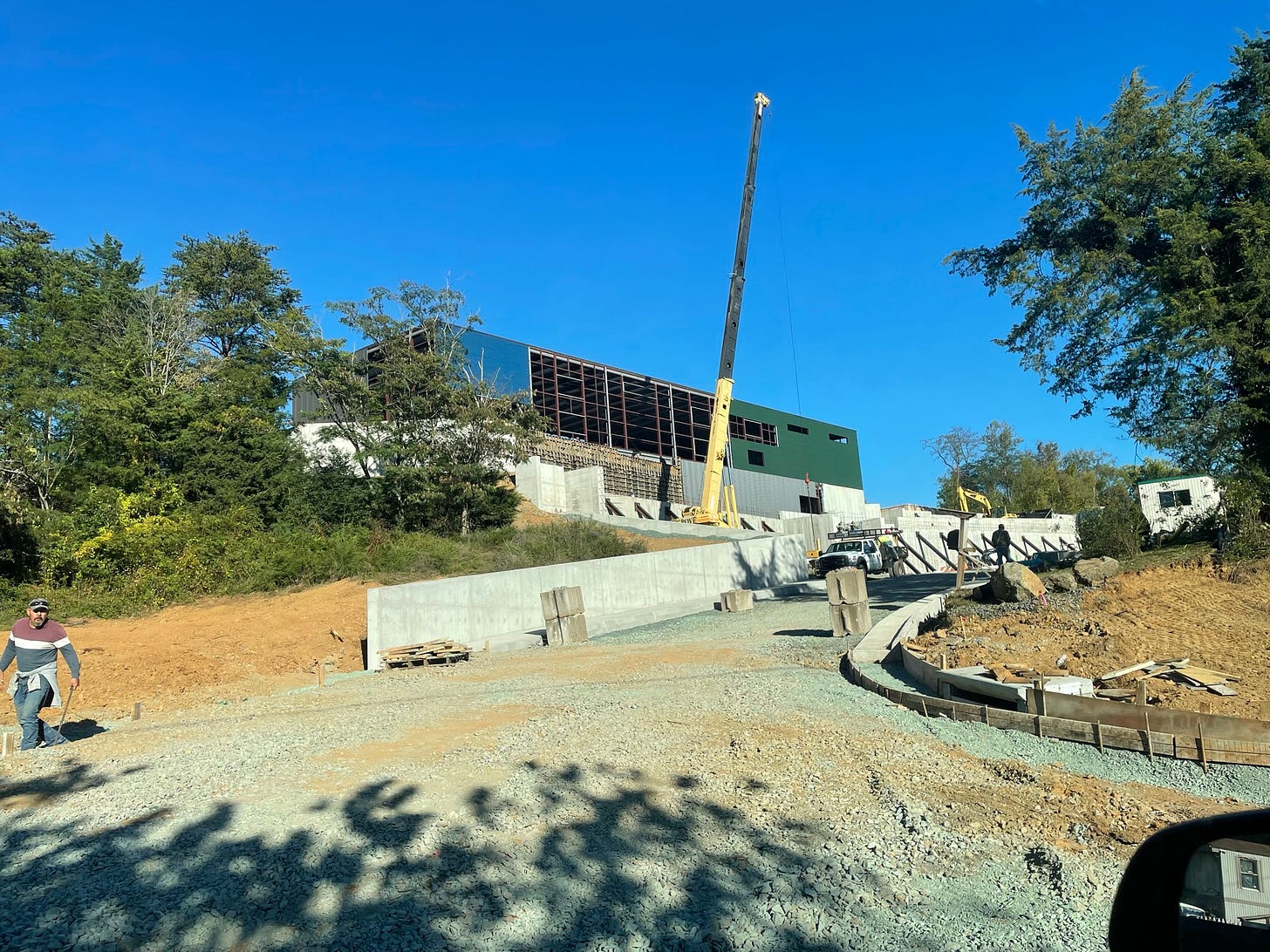
Another area of focus could be the Broadway corridor in the county that extends from Charlottesville’s Belmont-Carlton neighborhood. Albemarle’s economic development office has done land use planning work there to encourage industrial and business uses. Carlton Avenue is becoming a more urban street with two new apartment buildings constructed in the last ten years. The redevelopment of the Carlton Avenue Mobile Home Park by Habitat for Humanity and Piedmont Housing Alliance will further transform the entire area.
How many other areas along the Albemarle Charlottesville border are places that could benefit from mutual planning and shared information?
Joint meetings of the two groups used to be more frequent. Here are some stories written over the years:
City-County Planning Commissions discuss transportation and University issues, Sean Tubbs, Charlottesville Tomorrow, September 26, 2007
Albemarle officials call for joint planning along Rivanna River border with Charlottesville, Sean Tubbs, Charlottesville Tomorrow, August 2, 2012
City, county planning commissions finalize joint goals, Sean Tubbs, Charlottesville Tomorrow, January 16, 2013
Albemarle and Charlottesville planners tackle Franklin Street slopes, Charlottesville Tomorrow, June 24, 2015
City, county planners briefed on Woolen Mills rezoning proposal, Sean Tubbs, Charlottesville Tomorrow, October 25, 2016
City, county planning commissions focus on affordable housing, Josh Mandell, Charlottesville Tomorrow, January 25, 2017
What thoughts do you have on regional collaboration? What thoughts do you have on planning? Leave a comment, drop me a line!
In other meetings:
The Nelson County Sheriff’s Department continues its series of Senior Safeguard Sessions at the Calvary Baptist Church at 8408 Thomas Nelson Highway. (meeting info)
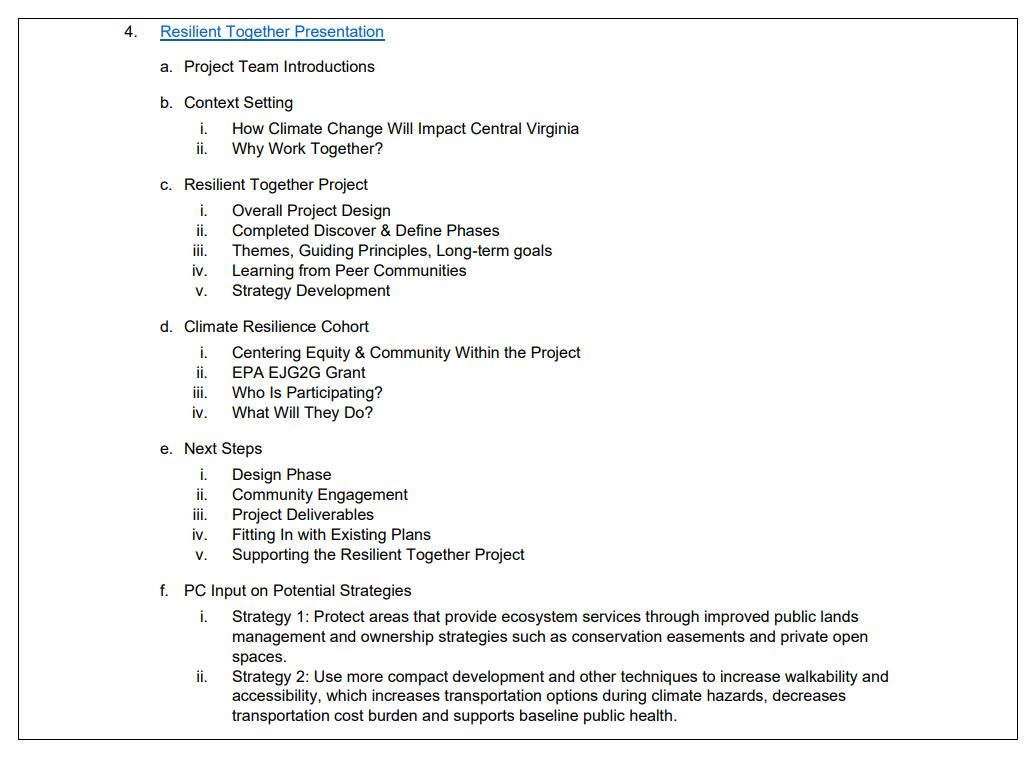
Wednesday, October 30, 2024
Albemarle convening all growth groups for AC44 update
If asked on a quiz show to guess what percentage of people in Albemarle County were aware of the Comprehensive Planning process, I would write down a very low number.
Why is that? Perhaps not enough people are writing about the process.
I just did a search on news.google.com on “Albemarle County Comprehensive Plan” and two stories I’ve written for C-Ville Weekly show up as the first two results.
The contents of this newsletter don’t get picked up by that search engine, and I have so far not spent the time to make that work. The first story I wrote on what the county has called AC44 went out in early October 2021 and the most recent was published last week.
This newsletter has a reach of about 3,000 people, a number I hope to grow over time. Assuming you’re new to this process, let’s look at some language that’s on the calendar for a joint meeting of all of Albemarle’s Community Advisory Committees scheduled for 6 p.m. in Lane Auditorium at the county’s office building at 401 McIntire Road. (meeting info)
“The AC44 Comprehensive Plan is currently in Phase 3 of development, focusing on plan rollout, action development, and engagement,” reads the website. “The plan will be rolled out in four parts: Community Vision and Needs, Growth Management Framework, Implementation, and Appendix.”
Last week the Planning Commission had a look at the land use chapter and I will have that story out by Tuesday. Other information outlets either lack the capacity or the interest to cover this topic, but the purpose of Town Crier Productions is to do what I can to explain what I can.
County staff hit pause on the project in the spring to do some internal work to change some of the structure of AC44. While the Planning Commission and the Board of Supervisors have had a check-in, this is the first time the growth advisory bodies will get a look.
Rather than write up a lot today, I’m going to ask you all to tell me what you think. What do you need to understand this stuff? I urge you to take a look at all of the stories I have done so far, and your input will help me tell the next ones.
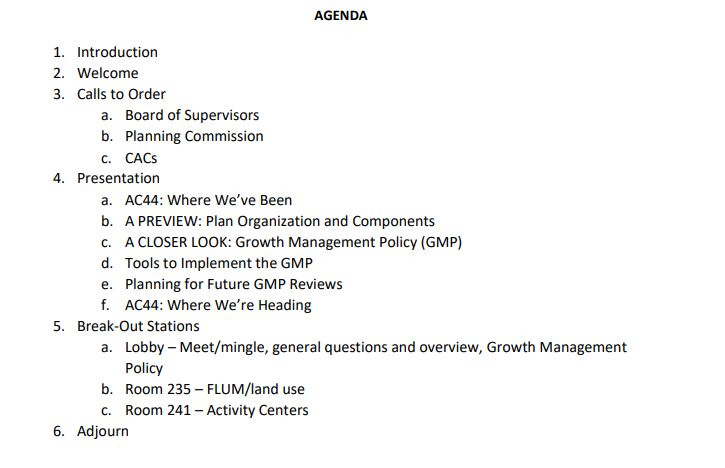
Public in Nelson County have second chance to review proposed zoning changes
Nelson County adopted a new Comprehensive Plan in April and quickly began work on updating the zoning and subdivision ordinances in response.
“The Zoning Ordinance regulates how land is used, designed, and developed,” reads a flier for a public engagement session scheduled for 6 p.m. at the Nelson Center at 8445 Thomas Nelson Highway. “The Subdivision Ordinance regulates the division of land into lots, or parcels.”
This is the second of two meetings.
So far there are two items available for review. One is the presentation from a kickoff on August 28 as well as a diagnostic of the existing zoning code that was shown that night. The Berkley Group has been hired to conduct the work.
“The Zoning Ordinance and the Subdivision Ordinance should be restructured into a streamlined, clear, and user-friendly document,” reads the diagnostic. “Combining both Ordinances into a single document would help achieve these objectives.”
Progress toward the development of the new language can be tracked at this website.
Thursday, October 31, 2024 and Friday, November 1, 2024
I may have missed meetings on this day and if I have I’ll get them in a newsletter this week. I know there’s something happening on Friday but I am not certain it’s a public meeting. I also need to get this published because I’m about to go meet some journalists from Norway.




In reference to the following paragraph...
Earlier this year, the CRHA paid $2.65 million for a property on the Downtown Mall to serve as a new headquarters. Now there is a construction contract to pay the firm Alexander Nichols $508,382.59 for phase 1 which will include demolition and abatement.
That's nearly $3.2 million dollars for office buildings for a program that is supposed to aid our low income families with housing repairs and safety. It's an obscene about of money to waste on employees instead of going to clients and CRHA neighborhoods. They already own the former community bike building on the edge of the Belmont bridge. A large office building could easily be built on that location for less than $1 million! When I make the above comment to others the reply was "It's federal money." Where do they think "Federal money" comes from? us! Does the city manager or city council have any say over how CRHA spends money? Can you imagine if just the difference of $2.2 million was spent on Westhaven?